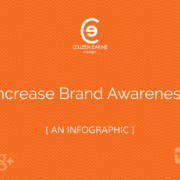One of the newer buzzword phrases introduced to the advertising and marketing vernacular is “Brand Experience.” What is the Brand Experience, you ask? In plain language, the Brand Experience is the sensory response to stimuli when consumers see a brand. These reactions include emotions, sensations, and behavioral activity. It is not uncommon for stimuli to be embedded in the brand logo, brand story and messaging, design, packaging, and supporting digital assets.
Color Psychology and the Brand Experience
When choosing color palettes for your brand, don’t overlook the importance of color psychology when establishing your brand elements. Not surprisingly, and somewhat controversially, colors give rise to specific emotions when used in marketing.
Yellow – The use of the color yellow is good for optimism. Yellow evokes feelings of warmth and clarity. Brands that use yellow in their branding include Subway, McDonald’s, Pennzoil, Sprint, Hertz, and Denny’s.
Orange – Orange is a welcoming and friendly color. It conjures up feelings of warmth, sunshine, and safety. Name brands that utilize the color orange in their branding elements include Payless Shoesource, Hooters, Amazon, Harley-Davidson Motorcycles, and Boost Mobile.
Red – Red is a color that imbues excitement! It’s bold, bright, and bursting with passion. You can find red as a leading color in branding from Target, Ace Hardware, Kentucky Fried Chicken, YouTube, Virgin, Coca-Cola, and Frito-Lay.
Purple – Purple is a color resonates creativity, imagination, wisdom, and luxury. Examples of companies that have implemented purple into their logos and branding elements include Purple Carrot, Cadbury, Yahoo, Hallmark, Astrazeneca, Taco Bell, and Curves.
Blue – Blue is an ideal color to select when you want your brand to get trusted. It represents strength and dependability. A sampling of companies with blue logos and branding include Facebook, Blue Nile, Ford, Blue Bunny, United States Postal Service, Walmart, IBM, and Intel.
Green – Green is a perfect hue when you want to instill feelings of growth, good health, vitality, and positivity. Companies that use green in their branding include John Deere, Tropicana, BP, Starbucks, Holiday Inn, Whole Foods Market, and TD Ameritrade.
Black and White – There is nothing more clear and concise than the use of black, white, and shades of gray for simplicity sake. Companies that use Grayscale (or Black and White) imagery include Apple, Honda, Puma, Adidas, and Nike.
The ultimate goal of the brand experience is to build lasting and meaningful relationships with your target audience. When people see your logo, you want them to recognize it. When they choose to do business with you, your customer service is an extension of your brand. Every interaction that you have with a customer helps define your level of excellence as an organization and contributes to your customer’s brand experience with your company.
Optimize Your Brand Online
The internet remains one of the biggest arenas for businesses of all sizes to connect with their ideal customer. Digital marketing that includes precision website development, social media marketing, email, SMS messaging, and search engine optimization all work together to build visibility and awareness.
Depending on your business and industry, your website may serve as a hub for your audience’s overall brand experience, so precision website development is essential to support marketing and sales initiatives. Investing in website development assures that no technical-oriented detail – of which there are tons – inadvertently gets forgotten or neglected. Fine points to consider include tracking pixel installation, sitemap submission, search engine webmaster tools, analytics, email opt-ins, and a mobile first responsive design.
Email is highly effective at connecting with your customers directly in their inboxes. Depending on the nature of your business, you might also find SMS messaging to be quite useful in communicating with your clients. According to statistics, it takes an average of 90 seconds for people to respond to text messages, as compared to hours or even days waiting for an email response.
An on-point social media strategy is helpful for connecting and engaging with your audience of followers, thought leaders, and peers, raise awareness and interest in your products, services, and events. Regular updates to your status lines combined with an advertising budget for display ads is a cost-effective way to extend your business network.
While most ad networks are relatively easy to use, always be sure to refresh yourself on best practices first. For instance, you’ll want to be sure you have installed a Facebook Pixel on your site before running paid ad campaigns to measure conversions and sales results accurately. Failure to do so could result in inaccurate or incomplete statistics, as well as make it more difficult for retargeting ads to work.
By employing white-hat search engine optimization tactics, you can take steps to align your company with success in Organic search engine results by carefully selecting relevant keywords and keyword combinations. The more visibility and coverage your brand capture in top search results, in conjunction with the right offer, the better your overall conversions and results are likely to be.
Think of your brand’s identity and experience as a big puzzle. It’s made up of many individual pieces. Each piece is essential to complete the whole. When all the parts snap together, you have a perfect picture. One missing piece throws everything off!
If you would like some help in putting the visual pieces of the puzzle together, contact the team at Colleen Eakins Design today! Our team of branding experts are here to help with all aspects of your brand’s identity and experience.
I’m a Digital Marketer & Freelance Writer with a penchant for all things forward-thinking and positive. I’m a fan of abundance and progress.


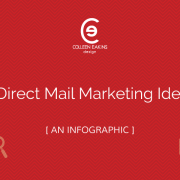 ©2018, Colleen Eakins Design
©2018, Colleen Eakins Design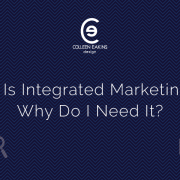 ©2018, Colleen Eakins Design
©2018, Colleen Eakins Design
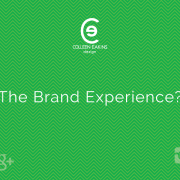 ©2018, Colleen Eakins Design
©2018, Colleen Eakins Design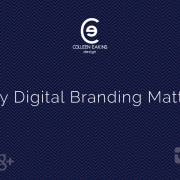 ©2018, Colleen Eakins Design
©2018, Colleen Eakins Design